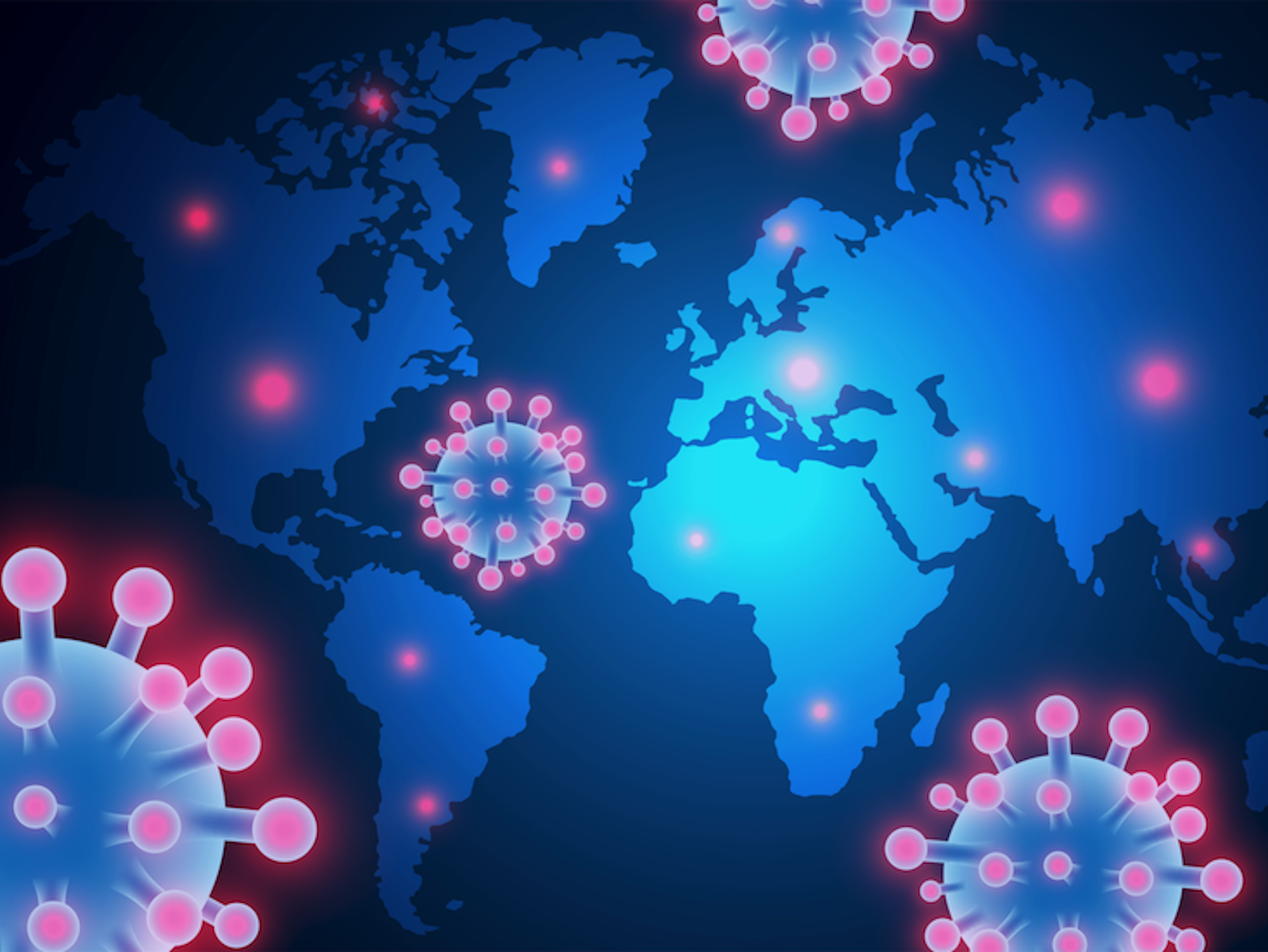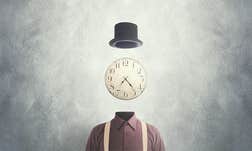
After I got my second dose of a COVID-19 vaccine, a wave of euphoria infused me along with the modified messenger RNA. Many friends describe the same feeling. This is the end of the pandemic for me. Life returns to normal.
But then my usual, pessimistic view of life returned along with an examination of the evidence. There is no question the development of the vaccines is a monumental achievement of science. Nor can anyone doubt that I and the rest of the 14 percent of adult Americans who are fully vaccinated are far better off than if the vaccines came later or not at all. But for now, here is what I can say for sure: It is unlikely that for the next six months I will get severely sick or die from the disease. A long list of unanswered questions and potential threats prevent me from assuming much more.
“There is light at the end of the tunnel,” Wayne Koff, President and CEO of the Human Vaccines Project, an organization that promotes vaccine development, told me. “It is just that the tunnel is far longer than we assumed.”
The more the virus spreads, the greater the chance for new variants to appear.
At the top of the stack of unanswered questions is how long the immunity from the vaccine (or from natural infection) will last, especially for those in the older cohort in whom immunity usually fades faster. There is no way to answer the question except to watch immunized and recovered people and count how many get sick and die in the coming months.
Another unknown is whether I and others who have been vaccinated or recovered, even if we feel fine, can transmit the virus. Early experiments looking at the amount of virus in peoples’ noses and throats indicates the threat is diminished, but it will take years of observation to know with more precision. Viral variants stand out as the most publicized concern now evoking a wide range of responses from those who observe them. When one appeared in the United Kingdom, Neil Ferguson, an epidemiologist at Imperial College, was widely quoted as calling it “catastrophic.”
Chris Murray, a professor in the Department of Global Health at the University of Washington, told me he has had “a lot of trouble getting a good night’s sleep” since variants emerged in South Africa and Brazil. Murray directs the Institute for Health Metrics and Evaluation, which produces one of the most closely watched models attempting to predict the future of the pandemic. “We have completely changed our model,” he said. “Things will look like the beginning of the end of the pandemic during the summer, but we see a very sharp rise in cases in the fall.”
Some other experts dismiss such concerns as overwrought. Vincent Racaniello, a professor of microbiology and immunology at Columbia, exhibits a grumpy persona on his informative online channel This Week in Virology. You “may hear every day in the press about a new variant that’s been detected and it’s going to be the end of the world,” he said recently. “But you should be careful. The media, of course, like to scare you. That’s how they get your attention, but not all these variants are scary.”
John Moore, a professor of microbiology and immunology at Weill Cornell Medical Center, blames the media less than “certain scientists who like to hear the sound of their own voice.” Natalie Dean, an assistant professor of biostatistics at the University of Florida, told me, “Sure, there is a theoretical concern, but I’m an optimist.” Few experts advise ignoring the variants. “We have to respect them and pay attention, but not panic,” Moore said.
Variants arise because every few times the virus that causes COVID-19 replicates, its genetic code (like that of most viruses) changes slightly due to copying errors. Most of these switched letters in the genetic alphabet result in no significant change. Occasionally they will alter the structure of the proteins that make up the virus. This too can be meaningless. It could in fact render the virus harmless. But occasionally “a variant of concern” arises. Though not defined precisely, it usually means an altered form of the virus that spreads more easily, causes more severe disease, evades immunity from vaccines or natural immunity, or some or all of the above.
Researchers have found evidence for variants with at least one of these characteristics in several parts of the world. Perhaps most significant is that laboratory experiments have shown that, while a few variants show a reduced response to the vaccines, immunity from vaccines retains its protection. The evidence from immunity following infection is less reassuring. Many scientists, especially in the United States, have stepped up the surveillance for variants, an effort that many admit has been inadequate.
What if immunity from vaccines or infection fades in months, or a truly frightening variant appears? With the massive advances in the technology of vaccine development we’ve witnessed recently, manufactures are already formulating new jabs—a booster to enhance immunity and protect against any nasty variants. Planning future boosters causes us to focus on the difficulty we’re having of getting shots into people’s arms. In the U.S. and other wealthy countries, supplies will soon outstrip demand and we’ll see how many people remain hesitant to get a shot for reasons ranging from a vague distrust of the government and medical establishment to My Pillow CEO Mark Lindell’s declaration that COVID-19 vaccines are “the mark of the beast.”
While wealthy countries confront vaccine hesitancy, the United Nations reminds us the rich nations are still vaccinating their citizens at the rate of one shot every second while most residents of the world’s poorest countries have not received a single dose. All those billions of unprotected people remain a threat that the virus will continue to spread. (Even a vaccinated person like me, with my 95 percent protection, has a 1 in 20 chance of getting the virus if I encounter someone else who is infected.) And the more the virus spreads, the greater the chance for new variants to appear.
Any new vaccine to protect against variants, along with other medical interventions, will need trials to determine if they are safe and effective. According to Koff of the Human Vaccines Project, one concern is a phenomenon called ”original antigenic sin,” seen often with influenza vaccines. A new vaccine induces a boost not against the new version of the virus but solely against the older one. Koff asks, “How many variants can we anticipate? Will we be endlessly playing whack-a-mole? No one knows.”
Vaccines are one of the four legs holding up the stool that represents a response to COVID-19. The second is social distancing and masking, behaviors now weaponized by the governors of Texas and Mississippi, among others, with the implication that defying public health recommendations represents a righteous statement of freedom. Few doubt that defying these simple rules of behavior will lead to increasing case numbers.
Better treatments for infected people represent another leg of the stool of fighting the disease. Through trial and error over the past year, medical workers have vastly improved their ability to care for COVID-19 patients. But specific medications have offered little help. Monoclonal antibodies have proven the most effective, but these are expensive and require that a patient receive an infusion in the same manner as most cancer chemotherapies—before requiring hospitalization. The monoclonal treatments appear to have helped Donald Trump, Chris Christie, and Rudy Giuliani, but will be of little use to many others. For those sick enough to require hospitalization, Remdesivir is the main, approved antiviral medication, but its effect on the disease is minimal. Giant pharmaceutical companies including Merck and Pfizer are investing heavily in the search for new treatments, an indication their leaders see no quick end to the pandemic.
That makes the final leg on the stool combating COVID-19—testing—as relevant as it has always been, since the start of the pandemic. Regular testing of asymptotic people could play a crucial role with this disease because half of those who infect others have no symptoms. But asymptotic testing has never been embraced in the U.S. In fact, since February 2021, the average number of daily tests in the U.S. has fallen 20 percent as more resources flow to the hope that the vaccine will be our sole savior.
The widest use of COVID testing has been by people who want to find out if they have the disease. But it can also be a public-health strategy, similar to measuring blood cholesterol to determine heart-attack risk. A public-health model of testing involves dampening an outbreak by finding those who could infect others and reducing the chance they will.
A mathematical simulation published recently in the Annals of Internal Medicine by David Paltiel, of Yale, along with Amy Zheng and Paul Sax, at Harvard, estimates that weekly at-home testing of the U.S. population could eliminate 2.8 million cases and 15,700 deaths from COVID-19 in a two-month period.
Home-testing kits are on the market now. Their biggest advantage is they provide results in 20 minutes or less, opposed to the nucleic acid tests, where one goes to a clinic or hospital to get swabbed and then waits 24 hours or more for the results. The downside of the rapid tests is cost, from $30 to $60 each, and most require a doctor’s prescription. They are also slightly less accurate than lab tests. False negatives could mean someone might still go to work and infect others. False positives might cause people to stay at home and isolate unnecessarily. Human behavior becomes a factor. Some people might just ignore the tests even if they got them. Others could go off to their workplace or school even with a positive result.
Paltiel, a professor of both public health and management, points out all these drawbacks but told me that “the beauty of our mathematical model is that we could bake in all the worst possible case scenarios and still show that regular at-home testing can prevent millions of cases and thousands of deaths.”
“Don’t let perfect be the enemy of good,” he said.
Paltiel believes the current high costs of the at-home tests could come down drastically if they were adopted widely. In Germany, at-home tests sell for 5 Euros each. Paltiel estimates with widespread U.S. government buy-in, the tests could come down to the cost of those used for malaria—about 20 cents each.
Michael Mina, an assistant professor at the Harvard School of Public Health, who has been a loud voice for frequent testing, is embarking on an experiment to try to prove their worth together with Citicorp. Citicorp employees returning to office work in the Chicago area and to Citicorp’s trading floors in New York will be given tests weekly to use at home and asked to stay there if their results indicate they could be infectious. Similar programs in other countries have shown that frequent, rapid testing does reduce cases.
“I’m American,” Mina said. “I live in the United States and I really want us to benefit as a country from smart public health.”
My vaccine shots were certainly a part of smart public health, but more is needed. It is becoming increasingly clear we will be living with COVID-19 for a long time. Paltiel told me his favorite metaphor is that “we have been using buckets with enough water to put out a campfire while a gigantic forest fire continues to rage around us.”
Robert Bazell is an adjunct professor of molecular, cellular, and developmental biology at Yale. For 38 years, he was chief science correspondent for NBC News.


























